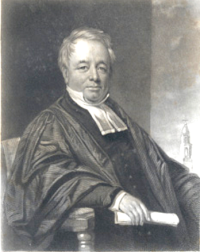February 29, 2024

Like most cities across the United States, Boston has been coming to terms with the roles its ancestor residents played in the enslavement and trafficking of Black African and Indigenous peoples in the Northeast and the greater Atlantic world.
Sites along the Freedom Trail have been incorporating stories about Black and Indigenous Bostonians, free and unfree, into their interpretive narratives. Often left untold against the overwhelming backdrop of this city’s revolutionary history, the experiences of people of color within that history are finally being laid out at the Old North Church, King’s Chapel, Paul Revere House, and Faneuil Hall, among others.
One little-known episode in colonial Boston connected to that history is the story from 1755 of three enslaved Black Bostonians who were accused, tried, and punished – two with death sentences – for poisoning John Codman, the person who enslaved them. Their act of resistance has received renewed attention, thanks to research conducted in 2022-2023 by Dr. Jaimie Crumley, a research fellow hired by Old North Illuminated, the nonprofit that operates the historic church in the city’s North End.
The story of Mark, Phillis, and Phebe has also sparked interest in the ancestral story of the Codman family, which led to the realization that the 1755 slaver John Codman was a great-grandfather of the esteemed Reverend John Codman, the first minister at Second Church in Dorchester, and the man for whom Codman Square in Dorchester is named.
Born in 1782, he preached at Second Church from 1808 until his death in 1847. His “fire and brimstone” services were frequented by John Adams and Daniel Webster. In 1848, Baker’s Corner was renamed Codman Square to honor his memory and his contributions to Dorchester.
As the Codman family has left a notable archival footprint in Massachusetts, this article will focus on the story of Mark, Phillis, and Phebe, whose existence probably would never have been documented had it not been for their act of resistance against John Codman in 1755.
In 18th century Boston, enslaved Black Africans made up about 10 to 15 percent of the population in a town with a mercantile economy that relied on a variety of skilled and unskilled labor, from shipbuilders to blacksmiths to common household laborers and servants. Enslaved individuals were involved in every facet of life to the point where some were allowed to take up a skill or a craft to improve their value as laborers, or even to indenture themselves out to make money as individuals so their enslavers did not have to provide as much for them.
An 1883 account of the trial of Mark, Phillis, and Phebe noted that John Codman, a merchant and ship captain, had enslaved men and women working for him as mechanics, common laborers, and house servants. Mark could have been a mechanic or laborer, but we know that Phillis and Phebe were house servants, as that provided them with the opportunity to fatally lace Codman’s food with poison procured from a North End apothecary by Mark. They had concocted the plan as a way to find “good masters.”
Phillis stated that Mark had “said that Mr. Salmon’s [slaves] had poison’d him, and were never found out, but had got good masters, & so might we.” So, they took this risk, for the chance to possibly have easier lives and “good masters.”
Mark and Phillis were ultimately convicted of petit treason, a crime defined in the 18th-century context as the murder of a “superior.” Phebe was sent to the Caribbean, where she likely stayed for the remainder of her life, never to reunite with the husband she had to leave behind in Boston.
The trial and execution of Mark and Phillis is the only known instance of the enforcement of the common law penalty for petit treason in Massachusetts. Phillis was burned at the stake on Charlestown Common, in present-day Somerville. Mark was hanged and gibbetted, a practice that used a gallows-type structure from which the dead or dying bodies of criminals were hanged in public display as an example to deter others.
In Mark’s case, the gruesome public display was not a short-lived spectacle. His body hung in a gibbet on Charlestown Common for nearly 20 years, according to contemporary accounts. Nearly 50 years later, in a 1798 letter about his “Midnight Ride,” Paul Revere referenced the site of Mark’s execution as a geographic marker that had remained culturally relevant, stating: “After I had passed Charlestown Neck, [and] got nearly opposite where Mark was hung in chains, I saw two men on Horse back, under a Tree.”
Mark’s last words were published and sold next to a prison on Queen Street, close to where the Old State House is today. His body and last words, immortalized in print, would serve as a terrorizing reminder to the enslaved population of Boston of what the cost of resistance would be – even as their white town residents were actively organizing to free themselves f om the rule of British imperialism.
As the City of Boston gets closer to 2026, the 250th anniversary of the Revolutionary War, it is imperative that stewards of the its history take the commemorative opportunity to tell a fuller picture of the American Revolution, to assert that those rose-colored narratives of the Revolution were far from capturing the whole truth, and to finally tell unrecorded stories like Mark’s, Phillis’s, and Phebe’s that speak to colonial Boston’s urban enslavement.
The author works at Historic Boston, Inc., a non-profit that develops at-risk historic buildings Boston’s neighborhoods. The founder of Historic Boston, Inc. was John Codman (1899-1989), the great grandson of the Rev. John Codman (1782-1847) of Codman Square.


